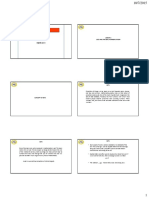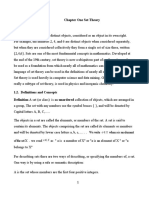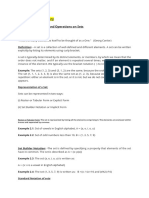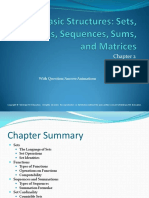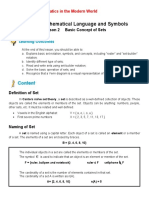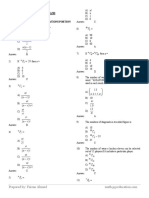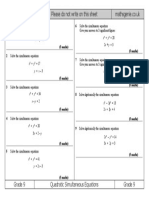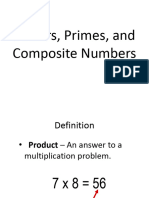0% found this document useful (0 votes)
6 views65 pagesMMW Module 2 Lesson 2 3 PDF
This document covers the fundamentals of set theory, including definitions of sets, elements, and various operations such as union, intersection, and complement. It also discusses concepts like well-defined sets, cardinality, subsets, and the power set, along with examples to illustrate these concepts. Additionally, it introduces Venn diagrams as a visual representation of set relations.
Uploaded by
Deven NarezCopyright
© © All Rights Reserved
We take content rights seriously. If you suspect this is your content, claim it here.
Available Formats
Download as PDF, TXT or read online on Scribd
0% found this document useful (0 votes)
6 views65 pagesMMW Module 2 Lesson 2 3 PDF
This document covers the fundamentals of set theory, including definitions of sets, elements, and various operations such as union, intersection, and complement. It also discusses concepts like well-defined sets, cardinality, subsets, and the power set, along with examples to illustrate these concepts. Additionally, it introduces Venn diagrams as a visual representation of set relations.
Uploaded by
Deven NarezCopyright
© © All Rights Reserved
We take content rights seriously. If you suspect this is your content, claim it here.
Available Formats
Download as PDF, TXT or read online on Scribd
/ 65



